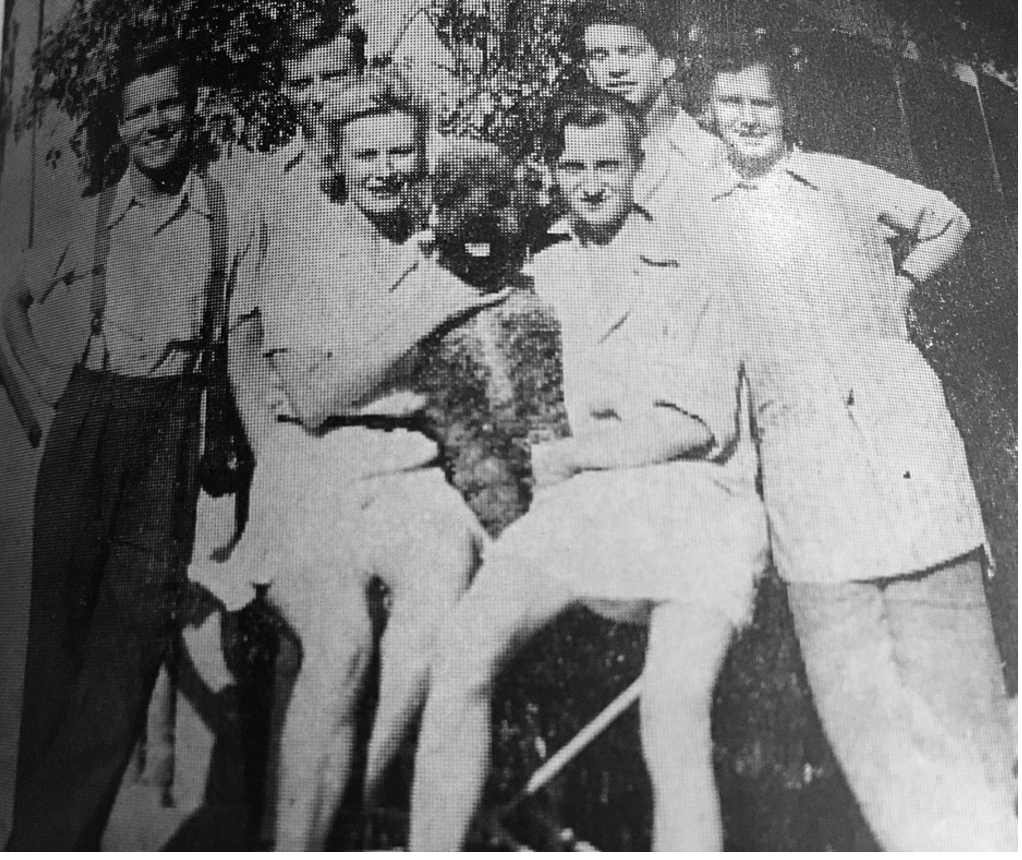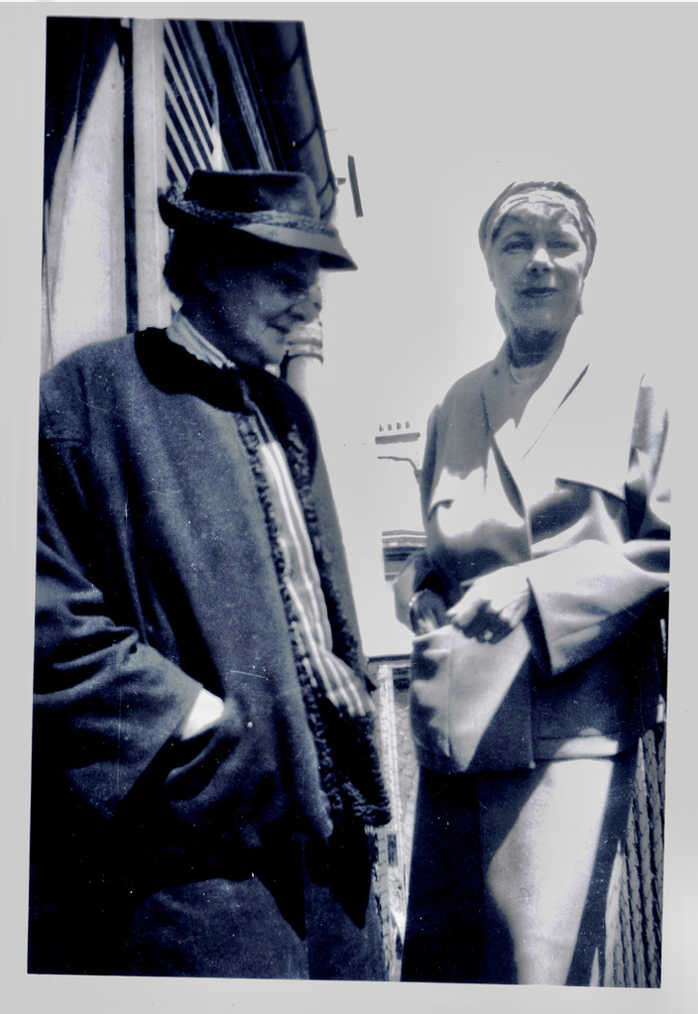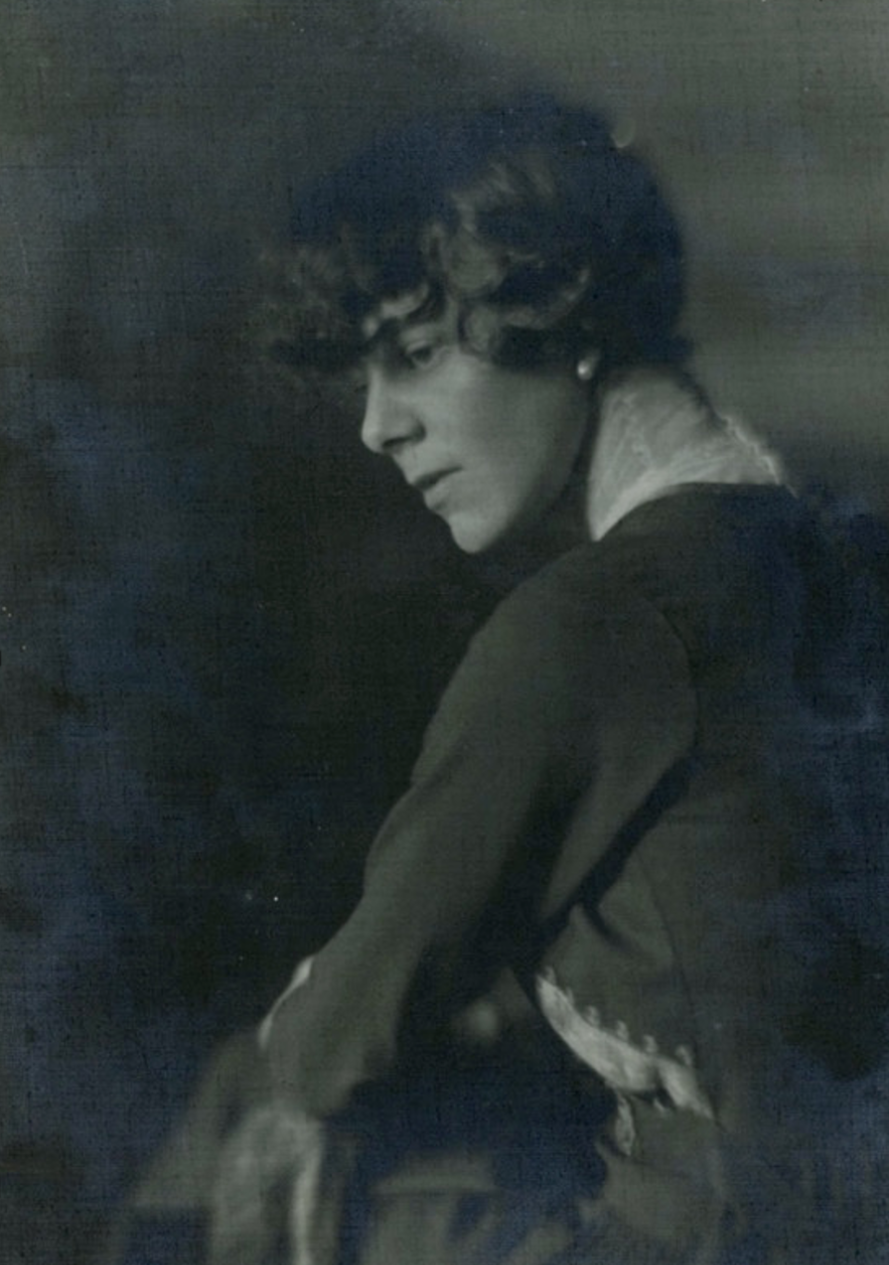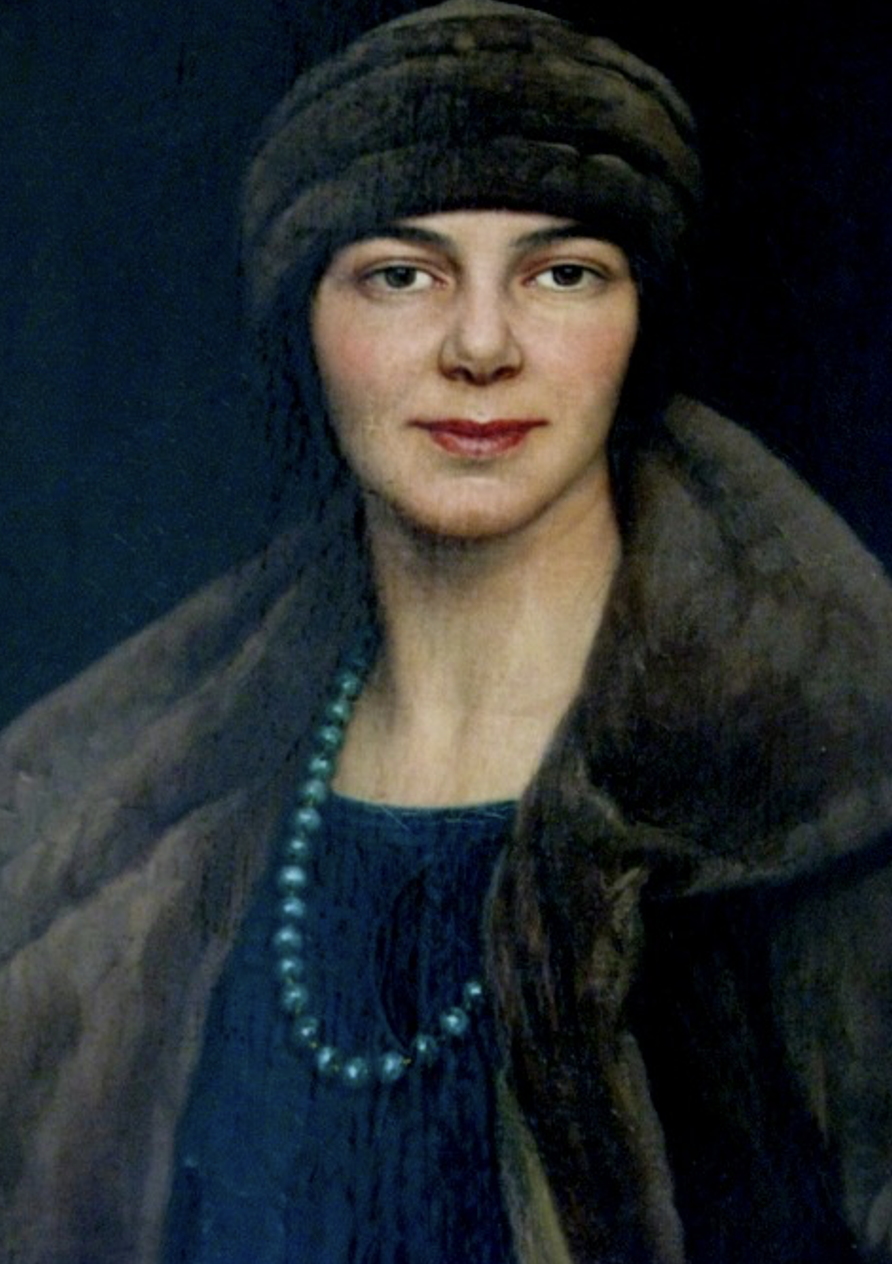Elsa, Drue, and Sylvia: The Sculptor, the Actor, and the Bookshop Owner go to War
Elsa Behr
Elsa Behr Spalding arrived in Paris in 1923 to study art at the Académie Julian. In a fit of “wanderlust,” as she described it to a friend, she’d left behind her husband, young son, and vast family estates in California and Hawaii to follow her dream of becoming a sculptor.
She was captivated by Paris. “The Fourteenth of July was a fascination,” she wrote. “Celebrations for three days, little bandstands around which we danced in the streets, and the feeling of real enjoyment among the people. There is, to me, no place like this in the world.”

Nude sculpture by Elsa Behr. Photo & permission from the Behr family
Sylvia Beach
Like many Americans flocking to Paris in the early 1920s, Elsa bought a subscription at Shakespeare and Company, the little bookshop on the rue de l’Odéon that Sylvia Beach had opened a few years earlier. Sylvia had become enchanted by the City of Light when her father was there as a minister of the American Presbyterian Church. A lover of books even as a young girl, she’d studied French Literature at the Sorbonne and daily perused the old green stalls of the Bouquinistes that lined the Seine nearby.

Drue Leyton
Drue Leyton, who grew up in Wisconsin, went to Hollywood in the 1930s. She became an instant celebrity for her role as the blonde heroine in the campy mystery series of Charlie Chan films.
Looking for something more, Drue began taking on more difficult roles, first on Broadway and then in London where she fell in love with the French actor and screenwriter, Jacques Tartière. They were married the day before the Munich Agreement was announced. “Peace in Our Time,” declared Chamberlain a bit hastily.
In September 1939, Hitler invaded Poland and Great Britain and France immediately declared war on Germany while the United States tried to remain neutral.
Jacques and Drue moved back to France where she took a job with the French Ministry of Information, producing radio programs aimed at American listeners. Her sharp criticisms of the Nazi regime earned her a promise of execution, announced on Berlin radio.
Marshal Pétain took over the government of France on June 17, 1940, and went on the air to broadcast his infamous radio message, outlining why France was capitulating to the Germans. Drue was there in the studio, as dumbfounded as everyone else.
Americans by the thousands had gone to Paris in the early 1920s. There were 6,000 in 1921, and by 1924, a staggering 30,000. In the early 1940s, with the German Occupation in full swing, only about 2,000 American men, women, and children were left.
Like Elsa, Drue, and Sylvia, they’d either chosen to stay or, for those less fortunate, simply couldn’t get out.

United States now officially at war with Germany and Japan: 1942
During the summer of 1942, with the United States now officially at war with Germany and Japan, the Nazis began rounding up the American women still in Paris. Arrested along with Drue were Elsa, Sylvia Beach, the artist Mabel Gardner, and Gladys Delmas, a writer.
The Americans were not part of the 75,000 French Jews sent to the death camps (with the help and collaboration of French citizens), but in those times no one knew for certain what would become of the latest group of people who were being herded onto trucks, buses, or trains by the Nazis.
The House Near Paris
In Drue’s book, The House Near Paris, written after the war, she describes how she and her friends were taken away without notice, first in trucks, then by train to the German prisoner of war internment camp at Vittel, an old spa town in eastern France.

Vittel – Frontstalag 194
Eight women shared the filthy compartment on their train. German nurses distributed hot coffee to the soldiers and guards, but when the Americans asked for some, according to Sylvia and Drue, the nurses threw “the dregs from the empty cups in our faces.”
In the morning, their train pulled into Vittel. After a long walk from the station, they arrived at Frontstalag 194. The British women, imprisoned there since the beginning of the war, came to the windows and banged out a welcome on their pots and pans. Sylvia described their room in the deserted dirty building as the kind of place where you go to slit your wrists.
Drue and Sylvia managed to get released from Vittel, with the help of French doctors, by feigning cancer. Most of the women, however, were held prisoner until the end of the war.

Food exchange between local farmers and prisoners at Vittel. Author-owned image
The Resistance
By the time Elsa was released, Drue and Sylvia were working as liaisons in the Resistance, helping Allied fliers get across enemy lines and back to their outfits. As a trusted friend, Elsa immediately joined them. Besides keeping the soldiers out of sight, they needed civilian clothes for the downed fliers still in uniform. Sylvia raided the closets of her author friends who’d fled Paris and left their belongings in her care.

Drue Leyton Tartière with a group of downed fliers, and her poodle Ondine
It was dangerous work. One slip-up within their group often meant instant death. In all, 196 fliers were hidden away in homes and apartments and then, when the time was right, escorted safely out of Paris. “Many thousands of men and women did more than I could,” wrote Drue. “Many others gave their lives.”

Elsa on right, just after the war, with her mother-in-law in Paris
Near the end of the war, Elsa wrote her friends in California that just like thousands of others during the Occupation, she had been cold, without water, light, soap, cloth, meat, butter, sugar, tea, or coffee. “And never able to speak openly except in the immediate circle of our truest friends. I have seen friends disappear, one by one, taken by the Gestapo, into Germany, whence no news comes. Yet all that seems nothing compared to what these boys are doing for us in a country not their own.”
There’s a renewed interest in the daring and behind-the-scenes exploits of women during the war years. Elsa, Drue, and Sylvia simply put their lives on hold and fought to bring freedom back to the France they loved.
Many other stories have yet to be told.
Image credits:
1-3. Elsa Behr – photos and permission from the Behr Family
4. Sylvia Beach at Shakespeare & Co, Paris in the Public Domain
5. Drue Leyton, Poster – Ray Milland, Drue Leyton, and Warner Oland in Charlie Chan in London (1934) via imbd
6. Drue Leyton, Article, Pittsburgh Press and the Chicago Daily News 1944 via Newspapers.com
7. Personal photograph by article author Mark Jesperson
8. Food exchange between local farmers and prisoners at Vittel. Author-owned image
9. Drue Leyton Tartière with a group of downed fliers, and her poodle Ondine at 419squadron.com
10. Elsa Behr on right, just after the war, with her mother-in-law in Paris. Photo by Elsa’s niece,
also named Elsa Behr. Permission to use from Elsa’s grandnieces Ann DiMartini and Sheila Grether-Marion
Your subscription (free or paid) for ‘le Bulletin’ will be gratefully received, and will help me continue to build ‘le Bulletin’ - the weekly newsletter of MyFrenchLife.org Magazine to be even more rich. Merci Mille Fois









Intriguing story, fabulous photos! Would like to see more.
Really interesting article. Look forward to learning more about these courageous women. Thank you.
What a fascinating read about three courageous and independent women!
Thank you for sharing these stories. I look forward to learning more about these amazing women!
My grandmother was a feisty, strong, courageous woman. Love learning more about her life as she didn’t share some of this with us.
Hello Lesley, was your grandmother one of these women?
Judy MacMahon
There are some marvellous books and online essays about the Vittel and Besancon camps, through which transited thousands of internees – including hundreds of female British Empire & U.S. passport holders. Inmates included at least two princesses, several English aristocrats, actresses, artists, future Allied & Communist spies, ‘Resistance wives’…the successful feature film ‘Two Thousand Women’ was based on a fact-inspired novel by a Vittel escapee, Frida Stewart.
Great story. Thanks for sharing. Sylvia Beach was always one of my heroes. What a treat to learn about Behr and Leyton. Looking forward to more from you!
Remarkable stories about these women and the risks they took in the resistance. Look forward to reading more about their lives. The photos of the food exchange and Drue with the downed fliers and her poodle Ondine are incredible as are all of the photos.
They are superb aren’t they Elizabeth.
Judy MacMahon